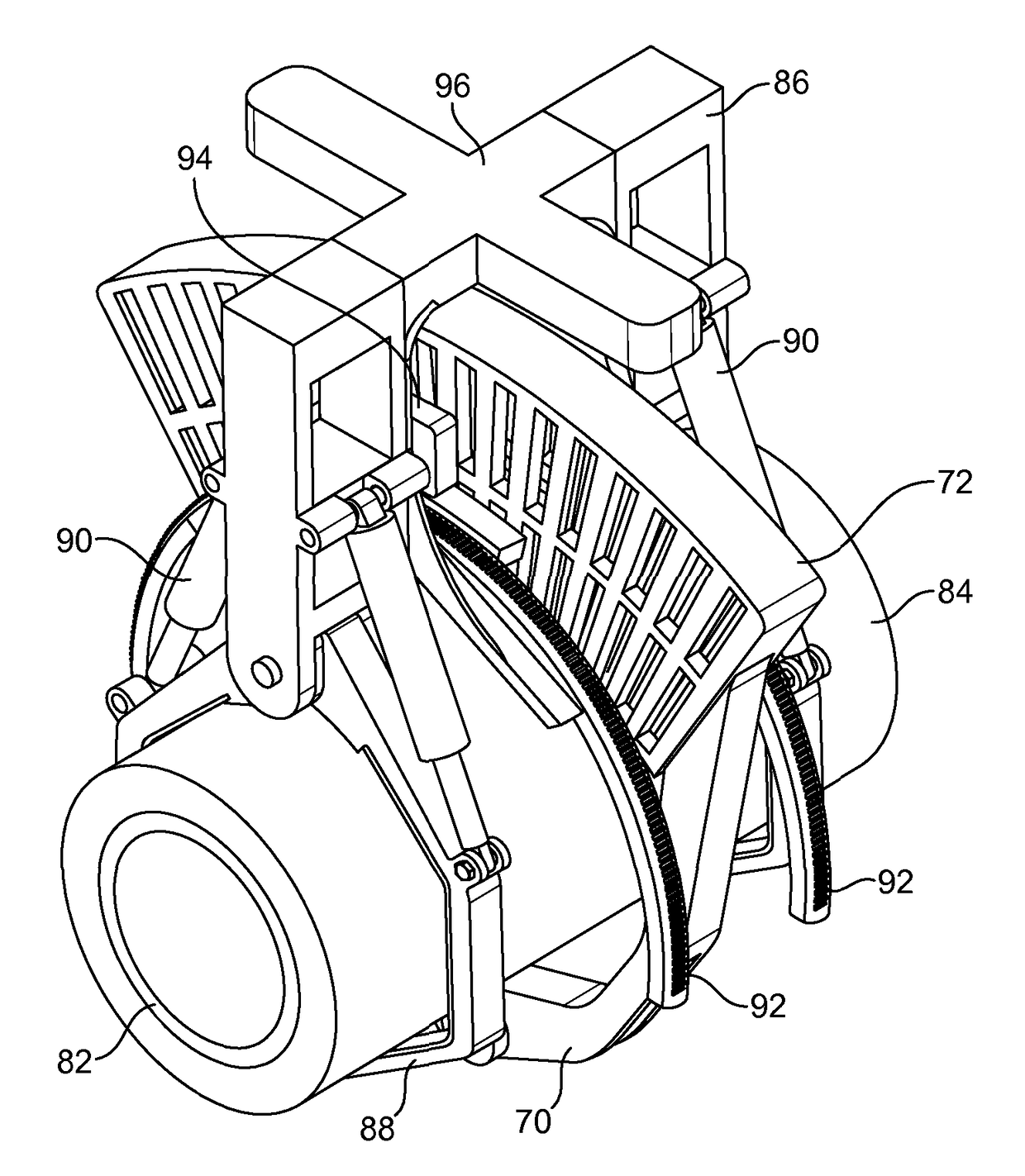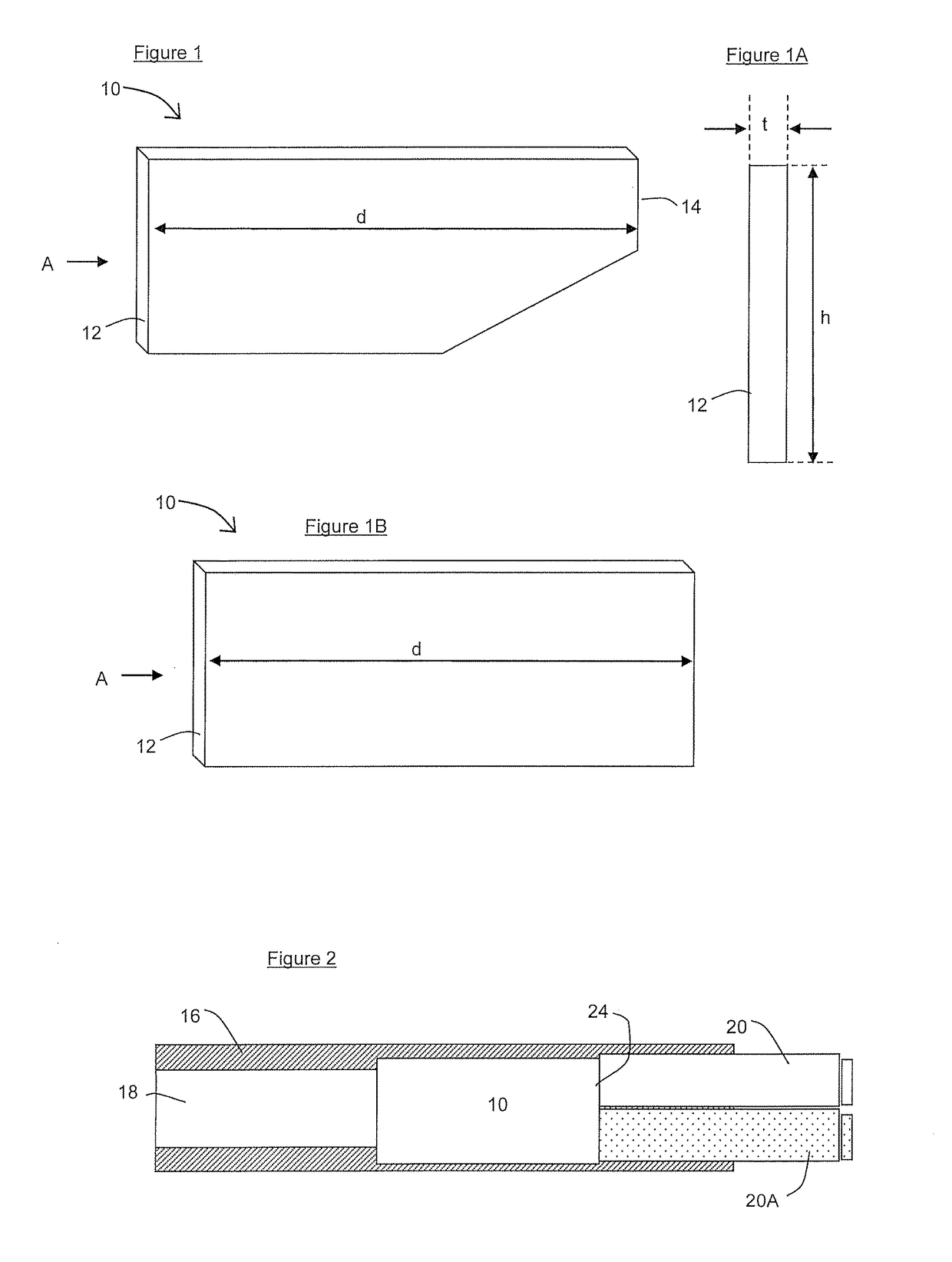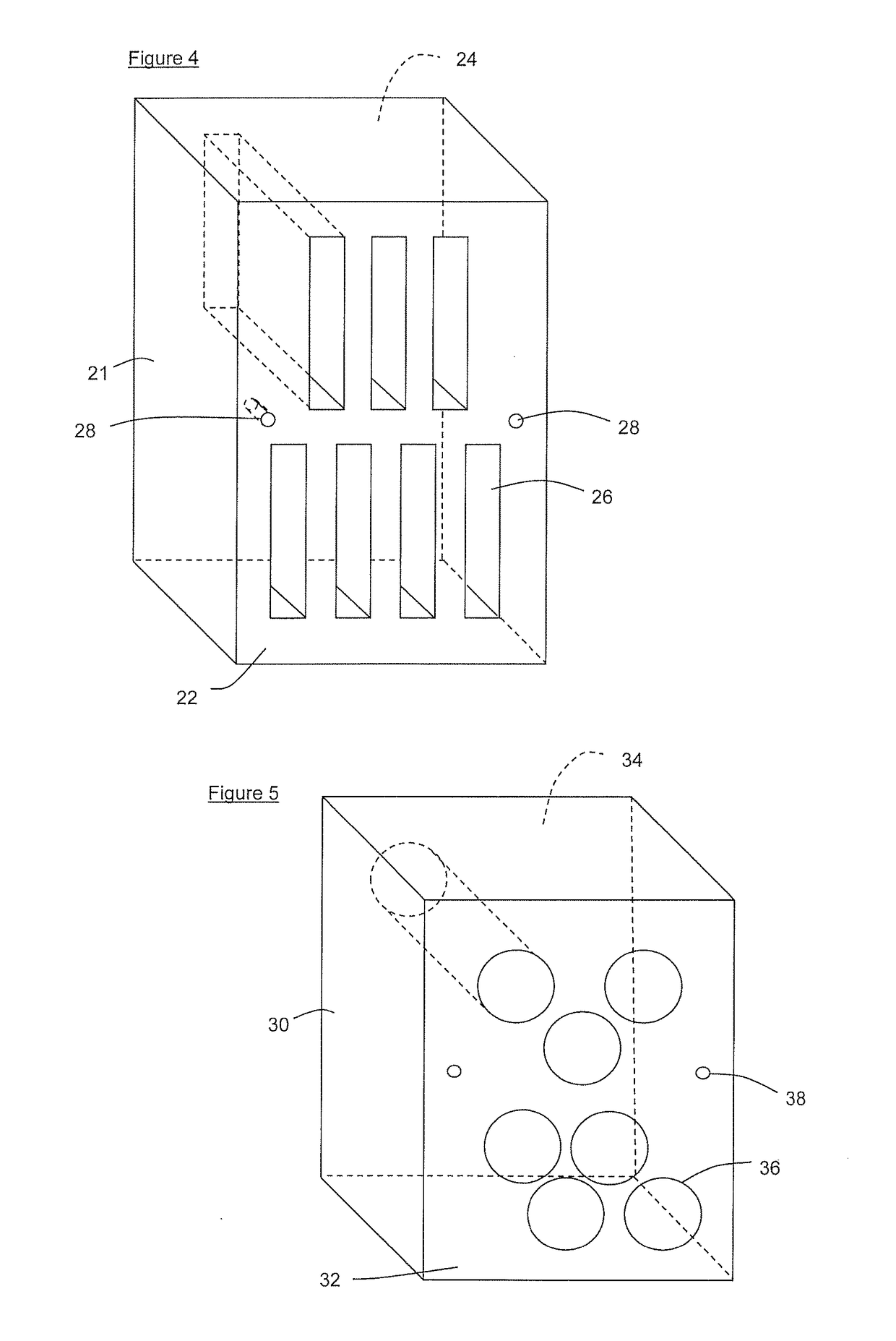Scanning method and apparatus
a scanning method and apparatus technology, applied in the direction of instruments, specific gravity measurement, handling using diaphragms/collimeters, etc., can solve the problems of pipelines without insulation or coating, pipelines located underwater, and inconvenient inspection of the interior of pipelines by pigs, etc., to achieve greater structural strength, reduce the weight of the detector unit, and increase the thickness of the shielding material
- Summary
- Abstract
- Description
- Claims
- Application Information
AI Technical Summary
Benefits of technology
Problems solved by technology
Method used
Image
Examples
Embodiment Construction
[0078]FIGS. 1 and 1A show a bismuth germinate (BGO) scintillator crystal 10 having a thickness t of 5 mm, a height h of 30 mm and a depth d of 75 mm. The detecting surface 12 is opposite the collecting surface 14. All surfaces of the bismuth germanate (BGO) scintillator crystal 10 except the detecting surface 12 and collecting surface 14 are coated in a highly reflective coating. FIG. 1B shows an alternative bismuth germanate (BGO) scintillator crystal 10.
[0079]FIG. 2 shows, a transverse cross-section through a detector unit 30, comprising a block of heavy alloy 16 which is highly attenuating to radiation, of the type used as shielding material for gamma radiation. The block of heavy alloy 16 has collimation channels 18 extending from the front face to the opposed rear face of the block of heavy alloy 16. In use, a bismuth germanate (BGO) scintillator crystal 10 is housed in the block of heavy alloy 16, with the detecting surface 12 of the bismuth germanate (BGO) scintillator crysta...
PUM
| Property | Measurement | Unit |
|---|---|---|
| depth | aaaaa | aaaaa |
| depth | aaaaa | aaaaa |
| depth | aaaaa | aaaaa |
Abstract
Description
Claims
Application Information
 Login to View More
Login to View More - R&D
- Intellectual Property
- Life Sciences
- Materials
- Tech Scout
- Unparalleled Data Quality
- Higher Quality Content
- 60% Fewer Hallucinations
Browse by: Latest US Patents, China's latest patents, Technical Efficacy Thesaurus, Application Domain, Technology Topic, Popular Technical Reports.
© 2025 PatSnap. All rights reserved.Legal|Privacy policy|Modern Slavery Act Transparency Statement|Sitemap|About US| Contact US: help@patsnap.com



